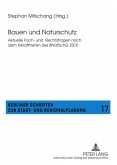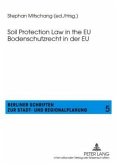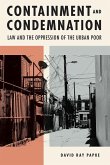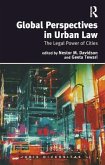Over the last two decades, Community law has played a major role in shaping national urban building law in general and particularly with regard to the use of ground space. This includes primarily European habitat and species protection law based on the Fauna-Flora-Habitat Directive (96/42/EC) and the Bird Protection Directive (79/409/EEC). Development planning has also been included by the SEA Directive (2001/42/EC) and the Seveso-II Directive (96/82/EC). Similarly, the EC Services Directive (2006/123/EC) and the Renewable Energy Directive (2009/28/EC) can also have implications on local development planning. Given this background, this research project produced on behalf of the Federal Institute for Research on Building, Urban Affairs and Spatial Development (BBSR) within the Federal Office for Building and Regional Planning (BBR) as part of general departmental research in 2010, presents the results of a survey conducted as a means of sharing experience with the EU Member States on this issue.
In den letzten zwei Jahrzehnten wurde das nationale Städtebaurecht, insbesondere soweit es auf die Inanspruchnahme von Bodenflächen ausgerichtet ist, maßgeblich von gemeinschaftsrechtlichen Vorgaben mitgeprägt. Anzuführen sind insoweit zunächst das europäische Habitat- und Artenschutzrecht auf der Grundlage der Fauna-Flora-Habitat-Richtlinie (RL 96/42/EG) und der Vogelschutz-Richtlinie (RL 79/409/EWG). Daneben haben aber auch die Plan-UP-Richtlinie (RL 2001/42/EG) und die Seveso-II-Richtlinie (RL 96/82/EG) Einfluss auf die Bauleitplanung. Gegebenenfalls können sich auch noch aus der EG-Dienstleistungsrichtlinie (RL 2006/123/EG) sowie aus der Erneuerbare-Energien-Richtlinie (RL 2009/28/EG) Auswirkungen auf die örtliche Bauleitplanung ergeben. Vor diesem Hintergrund enthält diese Forschungsarbeit, die im Auftrag des Bundesinstituts für Bau-, Stadt- und Raumforschung (BBSR) im Bundesamt für Bauwesen und Raumordnung (BBR) im Rahmen der Allgemeinen Ressortforschungim Jahr 2010 entstanden ist, die Ergebnisse eines mit EU-Mitgliedsstaaten zu diesen Themenbereichen geführten Erfahrungsaustausches.
In den letzten zwei Jahrzehnten wurde das nationale Städtebaurecht, insbesondere soweit es auf die Inanspruchnahme von Bodenflächen ausgerichtet ist, maßgeblich von gemeinschaftsrechtlichen Vorgaben mitgeprägt. Anzuführen sind insoweit zunächst das europäische Habitat- und Artenschutzrecht auf der Grundlage der Fauna-Flora-Habitat-Richtlinie (RL 96/42/EG) und der Vogelschutz-Richtlinie (RL 79/409/EWG). Daneben haben aber auch die Plan-UP-Richtlinie (RL 2001/42/EG) und die Seveso-II-Richtlinie (RL 96/82/EG) Einfluss auf die Bauleitplanung. Gegebenenfalls können sich auch noch aus der EG-Dienstleistungsrichtlinie (RL 2006/123/EG) sowie aus der Erneuerbare-Energien-Richtlinie (RL 2009/28/EG) Auswirkungen auf die örtliche Bauleitplanung ergeben. Vor diesem Hintergrund enthält diese Forschungsarbeit, die im Auftrag des Bundesinstituts für Bau-, Stadt- und Raumforschung (BBSR) im Bundesamt für Bauwesen und Raumordnung (BBR) im Rahmen der Allgemeinen Ressortforschungim Jahr 2010 entstanden ist, die Ergebnisse eines mit EU-Mitgliedsstaaten zu diesen Themenbereichen geführten Erfahrungsaustausches.








